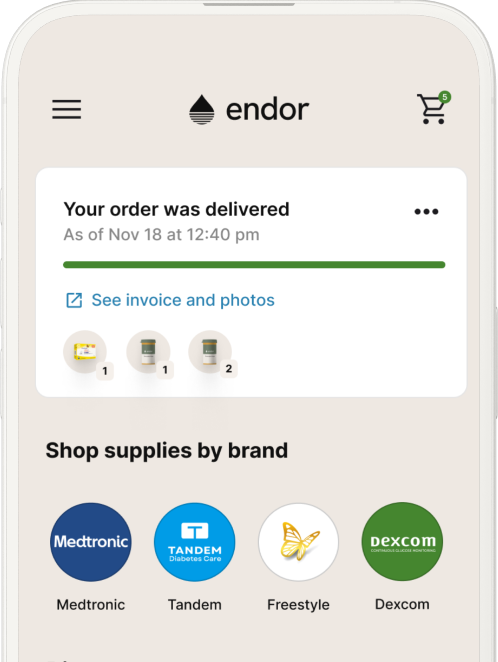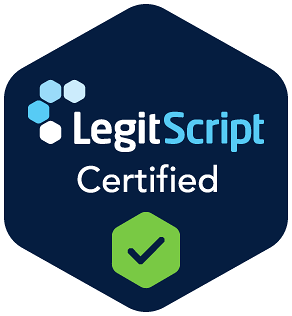Insulin Pump Buying Guide 2024
Interested in learning the ABCs of insulin pumps in Canada? You’re in the right spot.
This guide is for information purposes only, and we encourage you to follow advice from your healthcare professional before making any decisions about your health.
CONTENTS
- What is an insulin pump?
- A bit about Continuous Glucose Monitors (CGMs)
- How do insulin pumps work?
- Looping
- Should I use a Pump?
- Eligibility
- Coverage
- Devices Overview
- Feature Comparison Deep Dive
- Notable Functionality
- Extended Bolus?
- User Override?
- What happens if the pump loses connection to CGM data?
- Approved for ages:
- Touchscreen
- Upfront Pump Cost
- Approximate Monthly Cost
- Warranty
- Size
- Minimum Insulin Units
- Maximum Insulin Unit Capacity
- Min Basal
- Max Bolus
- Bolus Delivery Increments
- Mealtime Bolus
- Glucose Meter Integration
- CGM Integration
- Paired CGM Lifespan
- Can you view CGM remotely?
- Is daily calibration required?
- Low Glucose Suspend
- Reported Average Time-in-Range
- Follow
- Data Upload
- Software Upgrade
- Battery
- Battery Life
- Internal Backup Battery
- Target Blood Glucose Level
- Safety When Sleeping
- Managing Exercise
- Minimum Unit Delivery
- Tubing Required
- Infusion Sets
- Waterproof
- Smartphone app
- Mobile Bolus (from phone app)
- Approved Insulin(s)
- Delivery speed
- Contact Info
- Transfer Program
What is an insulin pump?
An insulin pump is a device for people living with diabetes that eliminates the need to inject insulin by hand using a needle.
Insulin pumps are about the size of a deck of cards, attach to your body via tube or pod, and deliver insulin under the surface of the skin (subcutaneously). Insulin pumps help to relieve the burden of diabetes management by replacing the need to give many injections throughout the day.
Insulin pumps have been available for over 15 years, but have become more valuable and popular in recent years because the technology has continued to advance.
There are four insulin pumps available on the market in Canada:
- Medtronic 780G
- Omnipod DASH
- Tandem t:slim X2 with Control IQ
- Ypsomed Ypsopump
Two of these pumps – Medtronic and Tandem – are able to automate insulin delivery and reduce the burden of managing blood sugars in target ranges by talking to a continuous glucose monitor. These ‘automated insulin delivery (AID) systems’ adjust insulin delivery rates based on what current blood sugars are and what they are predicted to be in the near future, taking into consideration how much insulin has already been given.
A bit about Continuous Glucose Monitors (CGMs)
CGMs are an important tool that work alongside insulin pumps to help inform the pump – either automatically or through your own calculations – what actions to take.
Continuous glucose monitors like Dexcom’s G6 and G7, Freestyle’s Libre 2 and Medtronic’s Guardian sensors help to reduce the burden of diabetes management by providing ‘real-time’ information about how things like foods, exercise and stress affect blood sugars without having to poke your fingers all day to get a reading.
The sensors have a flexible filament that sits just below the surface of the skin and measures blood sugars every 1 to 5 minutes. CGMs use a transmitter that sends blood sugar readings to a smartphone or insulin pump using Bluetooth transmission that does not require internet (or wi-fi).
How do insulin pumps work?
Insulin pumps work by delivering insulin to the body on frequent basis through an infusion set attached to the skin, usually on the belly, lower back, thigh or back of arm.
With an insulin pump, long-acting insulin is no longer needed; instead the pump delivers frequent, small doses of fast-acting insulin in response to the individuals needs and activities.
When eating meals or snacks, the pump user enters in a current blood sugar reading (not required with pumps that integrate with a CGM) and the amount of carbs being eaten. The pump then calculates the amount of insulin required based on settings programmed into the pump (e.g., basal rates, carb ratios, correction factor), and administers it automatically.
Insulin pumps have a changeable reservoir, cartridge or pod that contains enough insulin for a few days use. These need to be filled and maintained by the user who purchases and stores the insulin at home in vials.
Infusion sets come in a variety of sizes and configurations that suit different body types, skin types and preferences. Like CGM sensors, infusion sets are stickers that have a flexible cannula or tube that is inserted just under the surface of the skin. Insulin from the reservoirs or cartridges in the pump flows through the cannula of the infusion site into the body. Depending which pump you use and what kind of infusion set you choose, the infusion sets and reservoirs/cartridges need to be changed every 2-3 days with the exception of extended wear sites from certain brands that last 7 days.
Continuous glucose monitors like Dexcom’s G6 and G7, Freestyle’s Libre 2 and Medtronic’s Guardian sensors help to reduce the burden of diabetes management by providing ‘real-time’ information about how things like foods, exercise and stress affect blood sugars without having to poke your fingers all day to get a reading.
The sensors have a flexible filament that sits just below the surface of the skin and measures blood sugars every 1 to 5 minutes. CGMs use a transmitter that sends blood sugar readings to a smartphone or insulin pump using Bluetooth transmission that does not require internet (or wi-fi).
Looping
One of the most interesting and emerging aspects of an insulin pump is the potential for automation. In other words, the ability for a CGM and a pump to connect and automate the dosing of insulin in response to your real-time blood sugar readings.
There are two paths to setting up a looping system: one is Health Canada approved, and one is not. Please remember that this document is meant for informational purposes only and we strongly recommend you speak to a healthcare professional before undertaking steps to setting up a looped insulin pump for yourself or others.
Hybrid Closed Loop or Automated Insulin Delivery Pumps
A Hybrid Closed Loop (HCL) system – sometimes referred to as an artificial pancreas or automated insulin delivery (AID) – uses an insulin pump with a continuous glucose monitor or sensor and an algorithm programmed into the insulin pump to help manage blood sugars. This HCL/AID algorithm continually calculates and recalculates how much insulin you need every 5 minutes based on readings from a sensor. These systems will automatically deliver more or less insulin depending on current and predicted blood sugar levels, taking into account insulin already delivered (e.g., insulin on board).
When you use an HCL/AID pump, you still need to enter carbohydrates to bolus for meals and snacks like you would with any other pump, but HCL/AID pumps will continue to adjust your background basal rate and provide auto-corrections to help keep blood sugars in target range more effectively between meals, during exercise and while you sleep.
There are currently two approved HCL/AID systems available in Canada – Medtronic 780G and Tandem t:slim with Control IQ. Making the switch to a hybrid closed loop pump takes some getting used to, but most often significantly reduces the burden of diabetes management and leads to quite a jump in time-in-range.
D-I-Y Loop App
The Loop App or OpenAPS (artificial pancreas system) is a do-it-yourself automated insulin delivery application that you build and load on an iPhone or Android smartphone. It was developed by a group of highly engaged members of the T1D community who were motivated to build an “artificial pancreas” solution faster than government entities were willing to move.
Similar to using one of the two approved systems currently available, DIY looping automates insulin delivery based on personal settings (e.g., basal rates, carb ratios, correction factor), sensor data, insulin on board (IOB) and carb counts entered. Loop then uses this information to calculate an insulin dose that will bring your blood sugar within a set target range.
- In Closed Loop mode, Loop will automatically control insulin dosing.
- When using Open Loop mode, Loop recommends insulin that you manually accept or modify.
The main differences between HCL and DIY Loop is the level of customization, aggressiveness of targets and the fact that it is not approved for therapy by any government organization. Anyone choosing to build their own DIY Loop app must be willing to take full responsibility for building and running this system; doing so at your own risk.
DIY Looping is currently possible with Omnipod or with older, out-of-warranty versions of the Medtronic pump. Setting up a DIY loop can be a complicated process, and requires extensive research and some technical know-how.
Diabetes Canada recently published a detailed position statement on DIY Looping, which offers an in-depth summary of the risks and benefits as well as perspectives from patients and healthcare practitioners alike.
Should I use a Pump?
Insulin pumps can make life with diabetes easier, but they’re not for everyone. Insulin pump therapy is available for children, adults and older adults on insulin with Type 1 or Type 2 diabetes. Talking to your healthcare team (e.g., endocrinologist, nurse, diabetes educator) may help you determine whether a pump is right for you. Doing your own research is also important to make sure you are making a choice that will support your lifestyle.
You may want to consider using an insulin pump if you:
- experience high variability in blood sugar readings
- are unable to meet targets with multiple daily injections (MDI)
- experience delays in food absorption (gastroparesis)
- want to adjust/pause insulin doses when exercising
- have or have had severe reactions to low blood sugar
- have diabetes and are planning a pregnancy
- want to reduce number of daily injections
- want to enjoy an increase in quality of life
Managing diabetes with an insulin pump requires the person living with diabetes to:
- be comfortable with technology
- change infusion sites and refill cartridges or reservoirs that hold the insulin every 2-3 days
- to monitor blood sugars frequently throughout the day; either by finger poke or continuous glucose monitor (CGM)
- enter carbohydrate counts for all meals and snacks
- commit to attending follow-up appointments with an endocrinologist or diabetes educator 3-4 times per year
Some of the benefits of using an insulin pump include:
- only using fast-acting insulin (long-acting insulin is no longer necessary when using an insulin pump)
- lower total daily dose of insulin and help with preventing insulin stacking (when you give frequent bolus corrections in a short amount of time)
- a lot less poking; using infusion sites cuts down on up to 17 extra injections over a three-day period
- more precise insulin doses and delivery based on personalized basal rates, carb ratios, and correction factors
- bolus calculator to help with calculations (you must enter carbs for meals/snacks)
- more flexibility for food choices, portion sizes and timing of meals
- easier to manage planned and unexpected events and/or physical activity
- automation between meal boluses to prevent lows, reduce highs and increase time-in-range
- convenient – integrates well with lifestyle and improved quality of life and sense of wellbeing
- reduced burden of diabetes management
You may not enjoy using a pump if you:
- need more than 100 units of insulin per day
- have a reaction or allergy to adhesives
- are not able to access a continuous glucose monitor (CGM)
- don’t like having things stuck or connected to you
- are intimidated by technology or feel overwhelmed with the process of learning the features and functions of an insulin pump
- are expecting a ‘magic pill’ – the pump will not ‘do diabetes for you’
- experience impaired vision, hearing or dexterity
Eligibility
Most endocrinologists (doctors who specialize in diabetes) in Canada are supported by a Diabetes Education Program (DEP). Diabetes educators working with the DEPs can help people with diabetes to determine eligibility for insulin pumps. Criteria for eligibility includes:
- being enrolled or eligible for provincial healthcare coverage (e.g., OHIP)
- being diagnosed with type 1 diabetes
- being under the care of a physician or nurse practitioner for diabetes management
- completing a pre-insulin pump information session / insulin pump therapy education modules
- Standard of care: attending at least one assessment every three months with their diabetes educator
Coverage
Coverage for an insulin pump varies depending on the province you reside in. Most provinces have a financial assistance program that covers some – but not all – of the cost of using an insulin pump. Each program has different eligibility rules and requirements, but if you have type 1 diabetes there’s a good chance you will qualify.
Coverage requirements and amounts can change from time-to-time, so we encourage you to review the coverage and eligibility details directly on the official website. You’ll find the links here:
Devices Overview
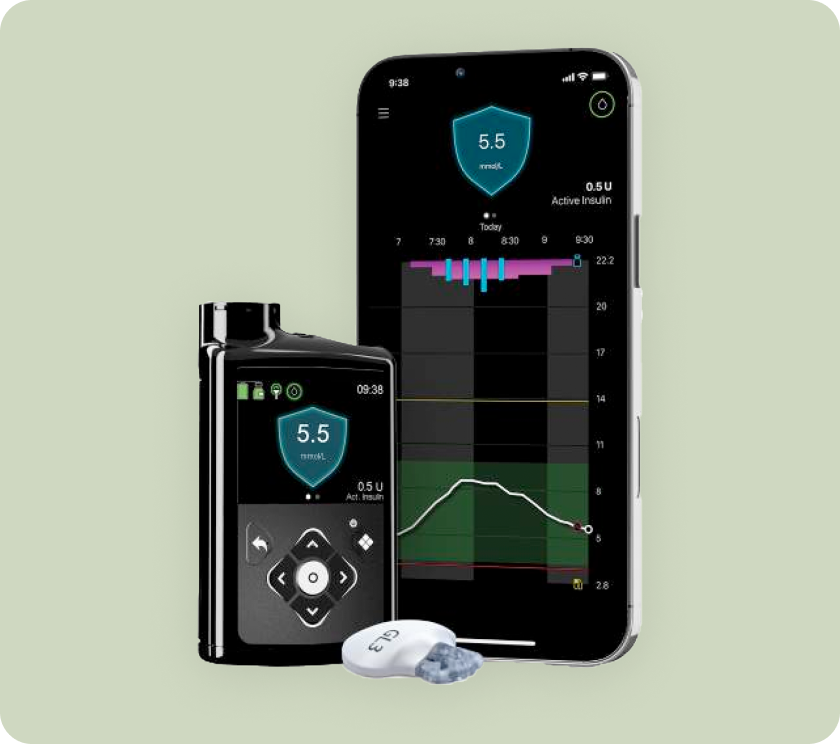
Medtronic 780G
Overview
The Medtronic 780G is a customizable tubed insulin pump that is great for people who are looking for a combination of automation and improved glucose control. It is one of two insulin pumps available in the Canadian market that is approved for Hybrid Closed-Loop Automated Insulin Delivery. The Medtronic 780G’s distinguishing feature is its market-leading automation algorithm which acts faster than other pumps to correct glucose levels.
The Medtronic 780G currently only pairs with the Guardian 4 CGM, which requires finger-prick calibration to enter SmartGuard (activate automation).
Cost (before coverage)
Disclaimer: pricing is indicative and is subject to change. For real-time information on pricing, assistance programs and offers please contact the providers directly.
Control Unit: $2,994
Monthly Supplies: $225 -$275 through Endor Health
Paired CGM: $385 per 35 days for the Guardian 3 CGM through Endor Health, direct billed to insurance
What we love
- Powerful looping algorithm acts quickly to correct high glucose, resulting in market-leading time-in-range numbers
- Real-time CGM data displayed on the colour screen control unit
- Glucometer integration
- Bluetooth connectivity (no internet required)
- Others can view data (parents, caregivers)
- Approved for age 2 years and up
- Updates available as software download
Possible Limitations
- Control unit is slightly larger than other tubed pump options
- Can only pair with the Medtronic Guardian 3 or 4 CGM
- No remote bolus option
- Menu navigation on the pump can seem overly complex, with many button steps and confirmations required
- Manual process to upload pump data to share with your healthcare practitioner (Carelink / Tidepool)
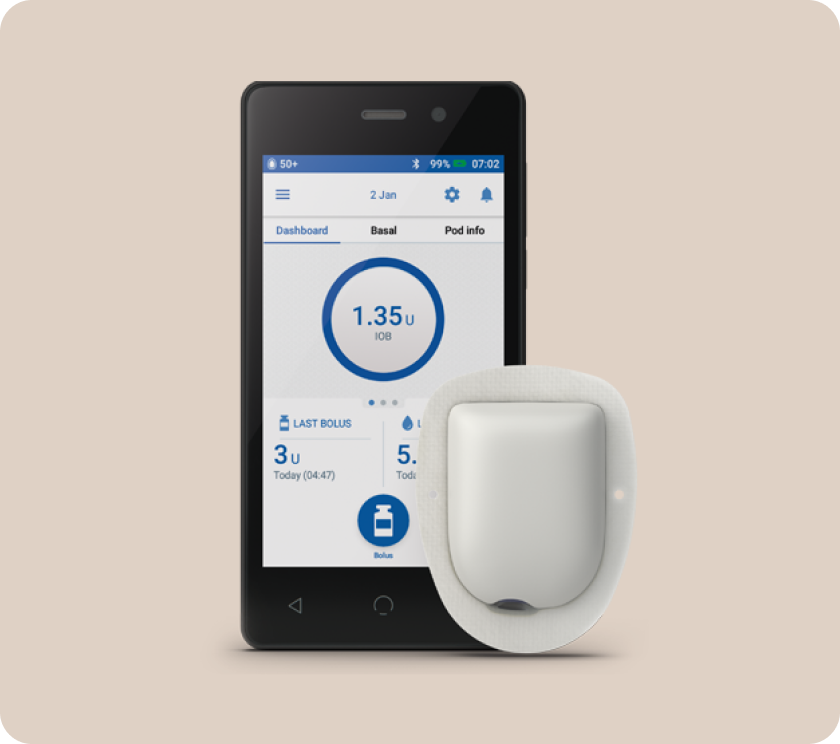
Omnipod DASH
Overview
The Omnipod DASH is the only tubeless pump option available in the Canadian market. Going tubeless has a lot of appeal for folks who are highly active or who value the simplicity and discretion that comes with a pod.
Omnipod Dash does not currently offer Hybrid Closed-Loop functionality that is approved by Health Canada, so Omnipod comes with a trade-off when it come to insulin automation. However it is a trade-of many people are willing to make because of the overall experience going tubeless represents.
Cost (before coverage)
Disclaimer: pricing is indicative and is subject to change. For real-time information on pricing, assistance programs and offers please contact the providers directly.
Control Unit: $6,300
Monthly Supplies: $300 per month
Paired CGM: No paired CGM, user can choose any sensor to use alongside
What we love
- Omnipod is the only waterproof pump, so is often favored by children and those with active lifestyles
- Omnipod tends to be the most discreet system visually given the small size, lack of tubes and contained nature of the device
- No tubing means less waste
- Auto-insertion functionality minimizes application errors and kinked cannulas
- Glucometer integration
- The PDM has a large colour screen
- The simplicity of the pod system means less supplies to pack when travelling
Possible Limitations
- The pods can be a bit bulky to wear, and adhesive is often required for the pod to stick a full three days
- No Health Canada-approved integration with CGM
- Cannot deliver bolus insulin without carrying a PDM, which feels like having a 2nd phone.
- Pods have to be changed every 3 days with no flexibility to extend
- Max reservoir holds only 200u of insulin, and the minimum fill is 80u
- Insulin On Board is not displayed in bolus calculation
- Lack of options of where to purchase the pods
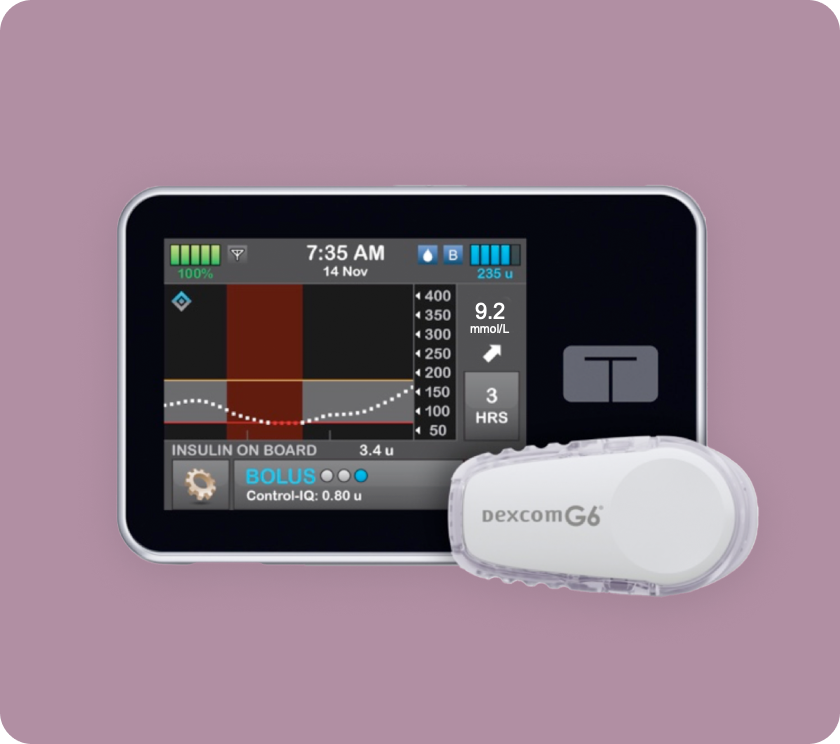
Tandem t:slim X2
Overview
The Tandem t:slim X2 is a tubed pump that comes packed with customization and automation features. This pump is a great option for those who want to adopt a Hybrid Closed-Loop system paired with the popular Dexcom G6 CGM. The t:slim control unit is smaller than the competition and has a large touchscreen. The Tandem t:slim HCL algorithm will match the responsiveness of as the Medtronic 780G when optimized, performs very well to improve time-in-range and achieves strong results for its customers. The Tandem t:slim with Control-IQ pairs with the Dexcom G6 CGM, with plans of sending out a software update before the end of the year to integrate with the new Dexcom G7 CGM.
Cost (before coverage)
Disclaimer: pricing is indicative and is subject to change. For real-time information on pricing, assistance programs and offers please contact the providers directly.
Control Unit: ~$6,300
Monthly Supplies: $225 -$275 per month
Paired CGM: $329 per month for the Dexcom G6 through Endor Health, direct billed to insurance
What we love
- Tandem’s t:slim is the smallest pump with a colour touch screen.
- The menus are easy to navigate and the screen shows all the information you need to know at a quick glance.
- Paired with the Dexcom G6, not having to poke fingers or calibrate the CGM is a major bonus
- The automation increases glucose time-in-range almost immediately and the sleep schedule feature relieves a lot of anxiety of dropping low while sleeping
Possible Limitations
- Must unlock screen to perform any functions
- No remote bolus option
- Tubing connector can snag on clothing
- May require extra time to update profile settings because basal, bolus and correction factor are in same time slot
- Does not link to a glucose meter
- Priming the pump requires 10.2 units of insulin, and the process can’t be interrupted
- Users report that the cartridge fill process is quite involved and takes a while to get used to

Ypsopump
Overview
The Ypsopump is a solid tubed pump option for those looking for basic functionality. Its adoption lags behind other tubed pump options from Tandem and Medtronic, with the primary differentiator being that Ypsopump does not connect to a CGM or offer the advanced automation features of its competitors.
Cost (before coverage)
Disclaimer: pricing is indicative and is subject to change. For real-time information on pricing, assistance programs and offers please contact the providers directly.
Control Unit: $6,400
Monthly Supplies: $220 per month
Paired CGM: No paired CGM, user can choose any sensor to use alongside it
What we love
- The pump is small in size with touch screen and large, easy to see menu icons.
- The self-filled glass reservoirs are easy to fill, easy to use, last longer (up to 7 days) and can hold any insulin.
- The Ypsomed Orbit infusion sets are easy to insert
Possible Limitations
- No CGM integration or insulin delivery automation
- Icon-based menu requires the user to memorize which icons represent which settings
- Company representation in Canada is behind its competitors
Feature Comparison Deep Dive
All pumps:
- Have a bolus calculator (except Ypsomed, which uses an app to calculate boluses)
- Allow for multiple basal rates, temporary basal rates and multiple basal patterns
- Have advanced bolus features
- Keep track of insulin on board (IOB)
Notable Functionality
Medtronic 780G:
SmartGuard™ Auto Mode capability when used with Medtronic’s Guardian™ 3 or Guardian™ 4
Sensor System – pump adjusts basal insulin based on sensor glucose (SG) readings and recent insulin delivery history
Integrated CGM with Suspend Before Low: insulin delivery automatically suspends 30 mins before reaching your pre-set low blood sugar level
Omnipod DASH:
Tubeless insulin delivery managed from a remote device called a PDM (Personal Diabetes Manager)
Automated insertion and priming
Waterproof pod *Note: PDM is NOT waterproof
Tandem t:slim IQ Control:
Control IQ technology when used with CGM (Dexcom G6) – pump will decrease basal rate based on CGM if predicted to be less than 6.25mmol/L and suspend insulin delivery if less than 3.9mmol/L within 30 minutes. If Exercise Activity is activated, the pump will decrease basal rate if predicted to be less than 7.8mmol/L and suspend insulin delivery if predicted to be less than 4.4mmol/L within 30 minutes.
Touch screen
Upgradable via software update
Ypsopump:
Touch screen
Bolus advisor on MyLife app
Bluetooth communication between app and the pump
Ability to prefill glass reservoir – lasts 7 days
Orbit infusion set – 360º rotation
Extended Bolus?
Medtronic 780G: No
Omnipod DASH: Yes
Tandem t:slim X2 with Control IQ: Yes (over 2 hours)
Ypsopump: Yes
User Override?
Medtronic 780G: No
Omnipod DASH: Yes
Tandem t:slim X2 with Control IQ: Yes
Ypsopump: Yes
What happens if the pump loses connection to CGM data?
Medtronic 780G: Safe Basal mode will deliver basal rate determined by the algorithm without adjustment or auto-corrections
Omnipod DASH: N/A
Tandem t:slim X2 with Control IQ: Pump will default to the programmed profile basal rate setting with no basal adjustment or auto corrections
Ypsopump: N/A
Approved for ages:
Medtronic 780G: 7-80 years
Omnipod DASH: All ages
Tandem t:slim X2 with Control IQ: 6yrs+
Ypsopump: 6yrs+
Touchscreen
Medtronic 780G: No, color LED
Omnipod DASH: Yes, blue & white
Tandem t:slim X2 with Control IQ: Yes, colour
Ypsopump: Yes, black & white OLED
Upfront Pump Cost
Medtronic 780G: $2,994
Omnipod DASH: $6,300
Tandem t:slim X2 with Control IQ: ~$6,300
Ypsopump: $6,400
Approximate Monthly Cost
Medtronic 780G: $200 per month + $285 for Guardian 3 sensor
Omnipod DASH: $300 per month
Tandem t:slim X2 with Control IQ: $255 per month + $299 for Dexcom G6
Ypsopump: $220 per month
Warranty
Medtronic 780G: 4 + 1 years for pump to match government funding (ADP). 1 year for CGM transmitter
Omnipod DASH: 5 year limited on PDM
Tandem t:slim X2 with Control IQ: 5 years
Ypsopump: 5 years
Size
Medtronic 780G: 5.3cm x 9.6cm x 2.4cm and weighs 95.7g
Omnipod DASH: 4cm x 6cm x 1.8cm and weighs 34 g
Tandem t:slim X2 with Control IQ: 7.95 cm x 5.08 cm x 1.52 cm and weighs 112g
Ypsopump: 7.8 cm × 4.6 cm × 1.6 cm and weighs 83 g
Minimum Insulin Units
Medtronic 780G: 8 units per day
Omnipod DASH: 80 units per load
Tandem t:slim X2 with Control IQ: minimum fill of 95 units
Ypsopump: No minimum. Requires 11 units to prime tubing and fill cannula.
Maximum Insulin Unit Capacity
Medtronic 780G: 300 units
Omnipod DASH: 200 units
Tandem t:slim X2 with Control IQ: 300 units
Ypsopump: 160 units
Min Basal
Medtronic 780G: 0.025 units per hour
Omnipod DASH: 0 units per hour
Tandem t:slim X2 with Control IQ: 0 or 0.1 units per hour
Ypsopump: 0.05 units per hour
Max Bolus
Medtronic 780G: 30 units per hour
Omnipod DASH: 30 units per hour
Tandem t:slim X2 with Control IQ: 25 units; 50 units per hour
Ypsopump: 40 units per hour
Bolus Delivery Increments
Medtronic 780G: 0.025, 0.05, or 1 units
Omnipod DASH: 30 units per hour
Tandem t:slim X2 with Control IQ: 0.05 units
Ypsopump: 0.1, 0.5, 1.0 and 2.0 units
Mealtime Bolus
Medtronic 780G: Prebolus for all meals/snacks 10-15 minutes before eating. CGM value auto-populates into the bolus menu for correction bolus calculation. SmartGuard will adjust the bolus dose based on the CGM value and insulin on board. The user is not able to change or override the suggested dose.
Omnipod DASH: Prebolus for all meals/snacks 10-15 minutes before eating.
Tandem t:slim X2 with Control IQ: Prebolus for all meals/snacks 10-15 minutes before eating. CGM value auto-populates into the bolus menu for correction bolus calculation. Read bolus prompts carefully. If sensor glucose is <6.1 mmol/L, system will prompt you to reduce the carb bolus, choose “X” to deliver the full dose for the carbs, choose “✔” to reduce the bolus.
Ypsopump: Prebolus for all meals/snacks 10-15 minutes before eating.
Glucose Meter Integration
Medtronic 780G: Accu-Check Guide
Omnipod DASH: No
Tandem t:slim X2 with Control IQ: No
Ypsopump: Contour Next One
CGM Integration
Medtronic 780G: Guardian 3 and Guardian 4
Omnipod DASH: N/A
Tandem t:slim X2 with Control IQ: Dexcom G6
Ypsopump: N/A
Paired CGM Lifespan
Medtronic 780G: 7 days (Guardian 3 and 4)
Omnipod DASH: N/A
Tandem t:slim X2 with Control IQ: 10 days (Dexcom G6)
Ypsopump: N/A
Can you view CGM remotely?
Medtronic 780G: Yes, Carelink™ Connect
Omnipod DASH: N/A
Tandem t:slim X2 with Control IQ: Yes, Dexcom G6 (user), Dexcom Follow (others)
Ypsopump: N/A
Is daily calibration required?
Medtronic 780G: Yes
Omnipod DASH: N/A
Tandem t:slim X2 with Control IQ: No
Ypsopump: N/A
Low Glucose Suspend
Medtronic 780G: Yes
Omnipod DASH: No
Tandem t:slim X2 with Control IQ: Yes
Ypsopump: No
Reported Average Time-in-Range
Numbers are indicative results from studies, results vary by individual
Medtronic 780G: 80%
Omnipod DASH: 70%
Tandem t:slim X2 with Control IQ: 78%
Ypsopump: N/A
Follow
Medtronic 780G: Carelink™ Connect
Omnipod DASH: Dexcom Follow Librelink
Tandem t:slim X2 with Control IQ: Dexcom Follow Librelink
Ypsopump: Dexcom Follow Librelink
Data Upload
Medtronic 780G: Carelink™ MiniMed Mobile
Omnipod DASH: Glooko, Tidepool
Tandem t:slim X2 with Control IQ: Source, Tidepool
Ypsopump: MyLife App
Software Upgrade
Medtronic 780G: Yes
Omnipod DASH: No
Tandem t:slim X2 with Control IQ: Yes
Ypsopump: No
Battery
Medtronic 780G: AA Lithium or Alkaline
Omnipod DASH: AAA Alkaline (x2) in PDM
Tandem t:slim X2 with Control IQ: Rechargeable lithium
Ypsopump: AAA Alkaline + internal rechargeable battery
Battery Life
Medtronic 780G: 3-4 weeks
Omnipod DASH: 3 weeks
Tandem t:slim X2 with Control IQ: 4-7 days with CGM
Ypsopump: 3-4 weeks
Internal Backup Battery
Medtronic 780G: No
Omnipod DASH: No
Tandem t:slim X2 with Control IQ: No
Ypsopump: Yes
Target Blood Glucose Level
Medtronic 780G: Hard coded correction target of 6.7; Adjustable basal targets 6.1, 6.7, 8.3; Optimized 5.5
Omnipod DASH: Adjustable
Tandem t:slim X2 with Control IQ: Hard coded target of 6.1; Adjustable basal target via 30 min prediction of 6.25-6.7, 6.25-8.9 and 7.8-8.9
Ypsopump: Default target: 5.8 , adjustable: 4.4-11.0
Safety When Sleeping
Medtronic 780G: Can adjust target as needed (only 1 target setting for 24-hr period) or use Temp Target if hypoglycemia is occurring during sleep (will disable auto correction boluses and raise auto basal target to 8.3 mmol/L).
Omnipod DASH: N/A
Tandem t:slim X2 with Control IQ: Program the sleep schedule to ensure Sleep Activity activates each day automatically. If hypoglycemia is occurring with use of SleepActivity (basal and correction factor settings can be adjusted), consider turning Sleep Activity/Schedule off or try using Exercise Activity when sleeping (note: auto correction boluses may be delivered when Exercise Activity is turned on).
Ypsopump: N/A
Managing Exercise
Medtronic 780G: Managing glucose levels with exercise must be personalized for each individual based on previous experience and type of exercise. Use Temp Target: turn on 1-2 hours prior to starting exercise and consider leaving on for several hours after exercise ends if delayed hypoglycemia is a concern.
Omnipod DASH: Managing glucose levels with exercise must be personalized for each individual based on previous experience and type of exercise. Consider reducing insulin dose at meal prior to activity or consuming small quantities of cars during exercise as needed, and/or disconnecting from the device as needed.
Tandem t:slim X2 with Control IQ: Managing glucose levels with exercise must be personalized for each individual based on previous experience and type of exercise. Use Exercise Activity: turn on 1-1.5 hours prior to starting exercise and consider leaving on for several hours after exercise ends if delayed hypoglycemia is a concern. Note: auto corrections may occur.
Ypsopump: Managing glucose levels with exercise must be personalized for each individual based on previous experience and type of exercise. Consider reducing insulin dose at meal prior to activity or consuming small quantities of carbs during exercise as needed, and/or disconnecting from the device as needed.
Minimum Unit Delivery
Medtronic 780G: 0.05 u/hr for bolus, 0.25 u/hrfor basal
Omnipod DASH: N/A
Tandem t:slim X2 with Control IQ: can program 0.1 u/hr; can deliver 0.008 u/5mins
Ypsopump: N/A
Tubing Required
Medtronic 780G: Yes, 23” or 32” tubing
Omnipod DASH: No
Tandem t:slim X2 with Control IQ: Yes; 23″, 32″ or 43″ options
Ypsopump: Yes
Infusion Sets
Medtronic 780gG:
Mio
Mio30
Quick-Set Paradigm
Silhouette
Silhouette Paradigm
Sure-T
Omnipod DASH:
Flexible 6.5mm cannula with angled insertion
Tandem t:slim IQ Control:
Autosoft 30
Autosoft 90
Varisoft
Trusteel
Ypsopump:
Orbit Micro
Orbit Soft
Inset
Waterproof
Medtronic 780G: No – Watertight up to 12ft for 24 hours
Omnipod DASH: Yes (pod only)
Tandem t:slim X2 with Control IQ: No – Watertight up to 3ft for 30 minutes
Ypsopump: No – Watertight up to 3ft for 60 minutes
Smartphone app
Medtronic 780G: MiniMed Mobile (Android/iPhone)
Omnipod DASH: Android/iPhone
Tandem t:slim X2 with Control IQ: Android/iPhone app to be available in Canada in 2025
Ypsopump: Android/iPhone
Mobile Bolus (from phone app)
Medtronic 780G: No
Omnipod DASH: No
Tandem t:slim X2 with Control IQ: No – expected in a few years
Ypsopump: No
Approved Insulin(s)
Medtronic 780G: Admelog (lispro), Humalog (lispro), Novorapid (aspart)
Omnipod DASH: NovoRapid, Fiasp, Humalog, Apidra, Admelog
Tandem t:slim X2 with Control IQ: NovoRapid, Admelog, Humalog U-100
Ypsopump: Admelog, Apidra, Humalog, Novorapid
Delivery speed
Medtronic 780G: 1.5u/min or 15u/min
Omnipod DASH: 1.5u/min
Tandem t:slim X2 with Control IQ: Auto-adjusts
Ypsopump: 33.3u/min
Contact Info
Medtronic 780G:
1-866-444-4649
www.medtronicdiabetes.ca
Omnipod DASH:
1-855-763-4636
www.omnipod.com/en-ca
Tandem t:slim IQ Control:
1-833-509-3598
www.tandemdiabetes.com/en-ca
Ypsopump:
1-800-695-5959
www.mylifediabetescare.com/en-CA
Transfer Program
Medtronic 780G:
780G Pathway Program allows Medtronic or non-Medtronic insulin pump with more than 6 months warranty remaining to upgrade to the MiniMed™ 780G system for $780!
*Price & program subject to change.
Omnipod DASH:
Cut the Cord program allows in-warranty users to switch to DASH with purchase of 1 box of pods.
Tandem t:slim IQ Control:
Tandem Diabetes Care Pump Access Program allows in-warranty users to upgrade to the t:slim X2 insulin pump with Control-IQ technology for the remainder of their current pump warranty for a fee.
Ypsopump:
Exchange+ Program allows users with an existing warranty to switch to the YpsoPump for the remainder of their current pump warranty for a reduced cost.

